Rhinoplasty, also commonly referred to as a “nose job,” is one of the most popular and highly sought plastic surgery procedures. There’s a good reason why so many people are choosing to undergo rhinoplasty.
Reshaping the nose surgically can make it look more balanced and harmonious with the rest of the face. Additionally, any underlying breathing or functional issues can be corrected at the same time.
Rhinoplasty Cost: A Breakdown of What’s Involved
You can expect rhinoplasty costs by a Board Certified Plastic Surgeon to range anywhere between $20,000 to $45,000. This variation in rhinoplasty pricing is based on a number of factors, such as your aesthetic goals, and the complexity of your nasal anatomy. the techniques used for your type of surgery, and whether it’s your primary or revision rhinoplasty. Let’s discuss these in more detail:
Your aesthetic goals: This relates to what changes or improvements you’d like to make to your nose’s appearance. If you’re only interested in narrowing the tip (known as tip-plasty), the cost of your nose surgery will be on the lower end. On the other hand, if you desire to remove a nasal hump, or change the projection, width, and shape of your nose, expect to pay more.
The complexity of your nasal anatomy: Another aspect that can determine rhinoplasty cost is the unique structure of your nasal bones, cartilage, and surrounding tissues. For example, have you experienced nasal fractures in the past? If so, it’s possible you may have sustained damage to bone or have scar tissue. Your plastic surgeon will take all these factors into account when proving your quote.
The techniques used for your type of surgery: A highly skilled plastic surgeon has many years of experience and training to give you the nose you’ve always wanted. For example, they may choose to perform closed or open rhinoplasty. They may need to do a bone graft or correct a deviated septum. All these will affect the final price of your surgery.
Is it your primary or revision rhinoplasty? If you’ve never had a nose job before, this will be your primary rhinoplasty. On the other hand, if you’ve had one or several nose surgeries in the past then a revision rhinoplasty will be necessary.
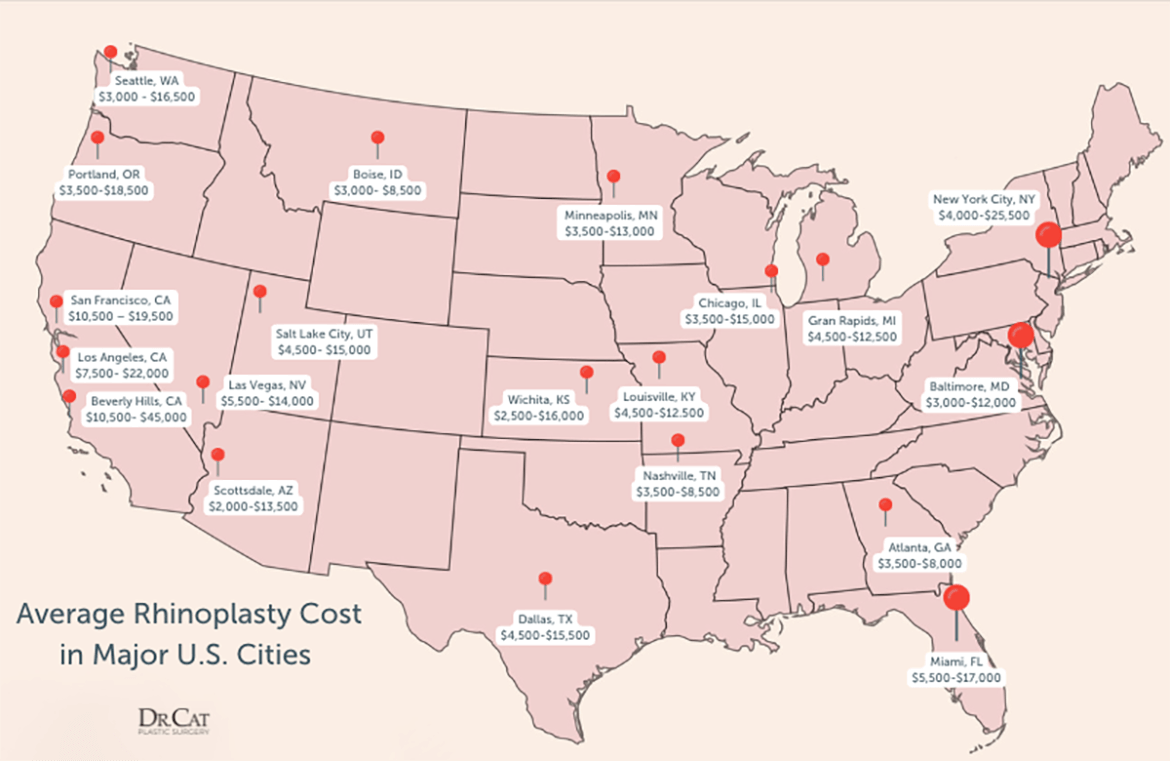
Revision rhinoplasty cost is usually on the higher end because tissue damage can be present from previous surgeries. More time is spent in the operating room and advanced techniques may be required to correct any structural abnormalities.
How the Surgeon’s Skill and Technique Can Affect Healing
Choosing the right plastic surgeon can make a big difference when it comes to your recovery and rhinoplasty swelling time. That’s because a light touch and gentle technique will result in much less swelling, bruising, and damage to surrounding tissue than a more heavy-handed approach to rhinoplasty.
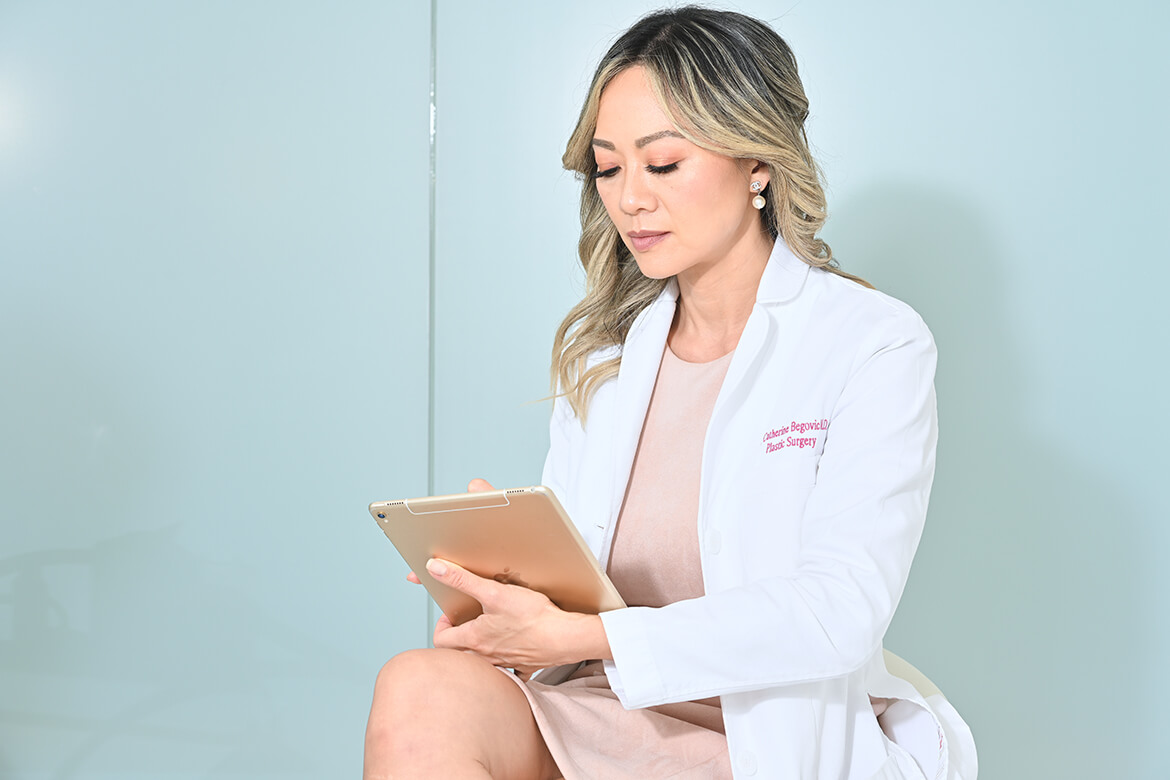
Dr. Cat is world-renowned for her beautiful results of course but also for taking meticulous care during each patient’s surgery. Such attention to detail ensures a faster and smoother healing and recovery time. In fact, many of Dr. Cat’s patients have reported minimal discomfort and much less rhinoplasty swelling time than they expected.
What to Expect: Rhinoplasty Recovery Week-By-Week
Rhinoplasty is normally an outpatient procedure. After the surgery is completed and you have awakened from the general anesthesia, you will be kept for observation in the recovery room. After a few hours, you’ll be able to return home (make sure someone will be available to pick you up).

The first four weeks post-surgery can be crucial to your final outcome. Therefore, make sure to follow post-care instructions carefully. Here’s what you can expect during your rhinoplasty recovery week-by-week.
Keep in mind that no two people experience the recovery process the same. This is a general rhinoplasty recovery timeline only and your own experience may be slightly different.
Day One of Surgery
Although the general anesthesia will have worn off, you may still feel a little sleepy or tired when you get home. Get as much rest as you need and take pain medication (if necessary) as directed. You may not experience any pain or swelling so soon after surgery; however, you may feel extremely congested.
Congestion is normal and is caused by internal swelling of your nasal passages. You most likely have a splint over your nose and cotton dressing stuffed inside. These can all contribute to you feeling stuffed up or like you have a bad cold. Make sure not to blow your nose or try to remove the stuffing, even if you’re having difficulty breathing through your nose.
One Week Post-Op Rhinoplasty
You’ll experience the most changes to your nose during the 1-week post-op. Swelling and inflammation normally peak at 48 hours and start to become better over the next couple of days.
You may experience some bruising around the eyes, although with Dr. Cat’s gentle technique, most patients find bruising to be minimal. If you do get some bruising, it will normally resolve in about a week. If you have to go outside, a little concealer can help mask red and blue discoloration.
After a few days, you’ll feel much better and may wish to resume your normal activities. You’ll be cleared medically to go back to work or to venture to the grocery store. Make sure to take it easy, however, and not over-exert yourself.
Avoid strenuous exercises like heavy lifting or cardio, excessive heat such as steam or sauna, and at night, try to sleep on your back to prevent putting pressure on your nose.
Around day seven you will have a follow-up appointment at your plastic surgeon’s office. At this time the splint and dressing will be removed and you’ll be able to see your new nose for the first time. It will still be swollen but you’ll be able to make out any changes to your nose’s shape and overall appearance.
To document your progress, someone in the office will take rhinoplasty healing stage pictures on the day of your follow-up visit.
 Weeks 2-4 Healing Post-Op
Weeks 2-4 Healing Post-Op
You’ll still be swollen but most people won’t notice it. Your nose may be tender to the touch but most pain or discomfort should be gone by now. You will be able to start doing light exercises such as walking or stretching. Applying makeup and washing your face as normal is fine, just keep it gentle.
Your nose may still feel congested, especially at night. Again this is perfectly normal and you’ll notice that each day there’s some improvement. Some patients may be tempted to use over-the-counter anti-congestion medication to help with breathing. This is not recommended as it may interfere with your healing process.
When You’ll See the Final Results
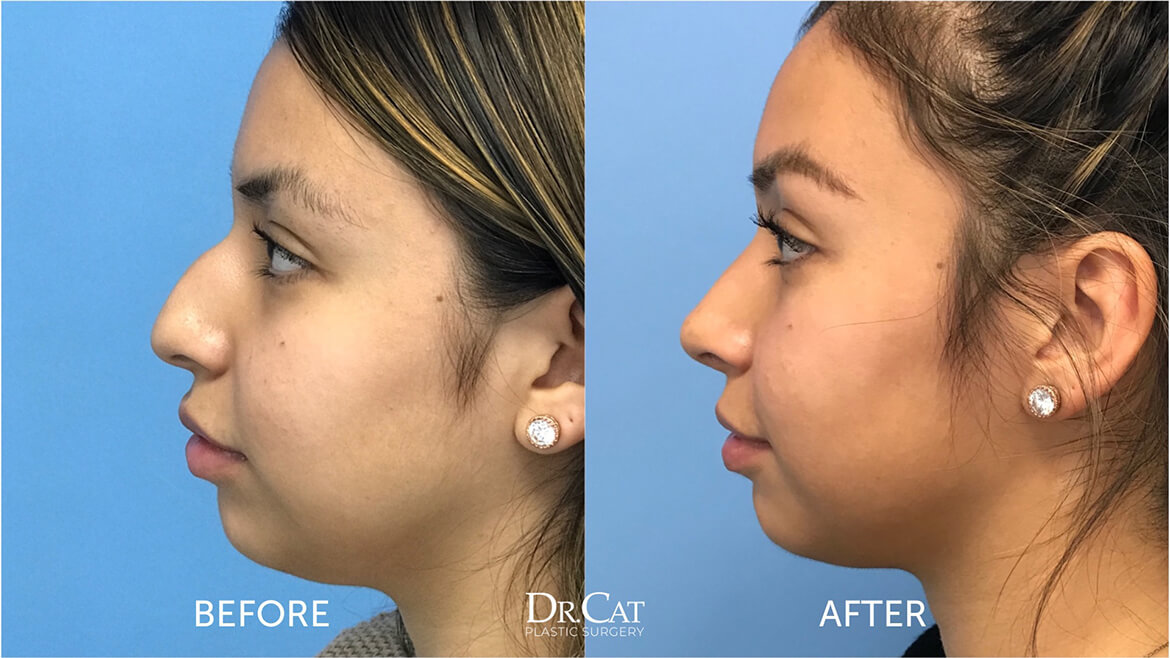
With each passing week, you’ll see small refinements in the shape of your nose. Keep in mind that it can take up to a year for healing to become complete. In the meantime, your progress may vary from one week to the next, or even daily.
Your nose may appear more swollen in the mornings, for example. Swelling may also be affected by the weather, heat, cold, and other factors. Remember to be patient and let your healing process run its course. Soon you’ll love your new nose every time you look in the mirror. Call Dr. Cat’s office at 310-858-8808 to schedule a consultation and start your journey today!
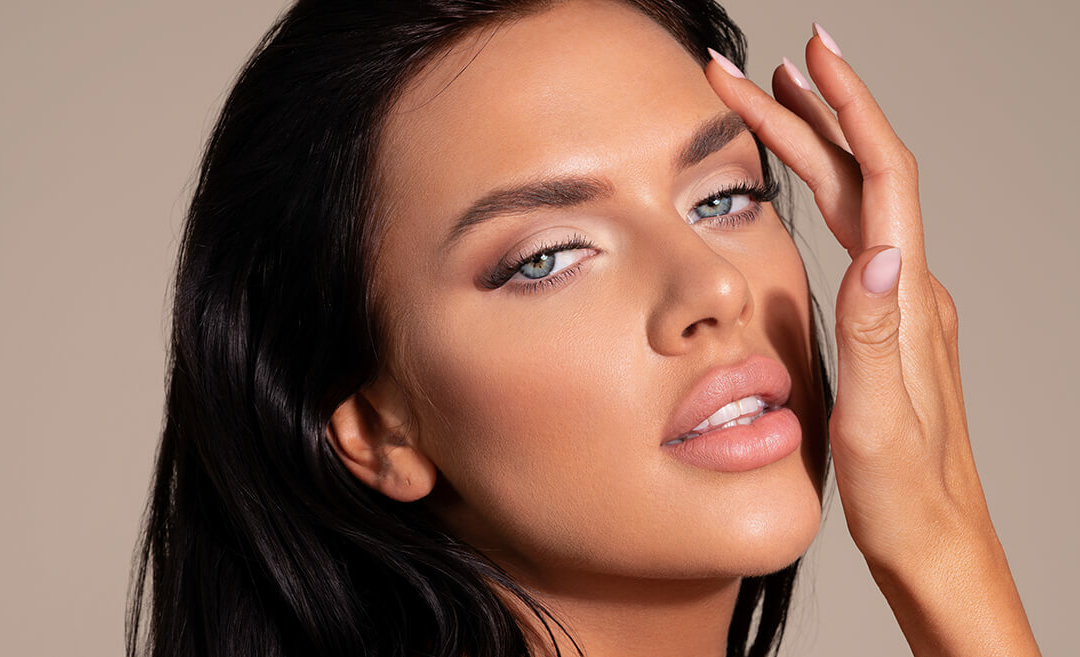
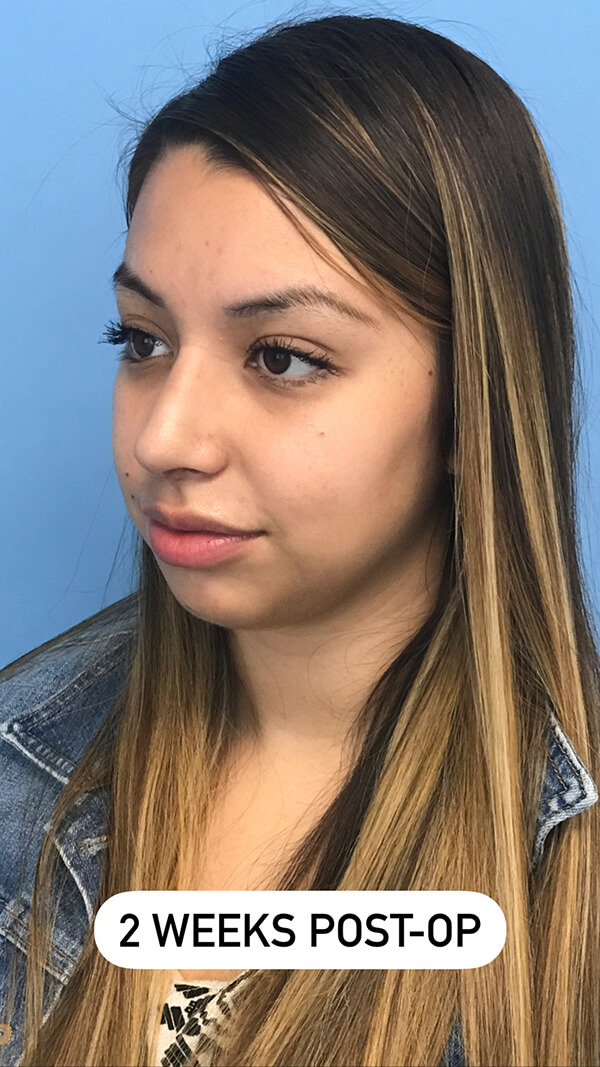 Weeks 2-4 Healing Post-Op
Weeks 2-4 Healing Post-Op
